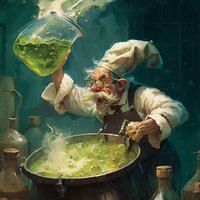Alpha and Beta Acids in Beer: A Quick Guide for Brewers
Posted by Matteo Lahm on 17th Mar 2023
Alpha and beta acids are the two main types of hop acids that contribute to the flavor and aroma of beer. Alpha acids are responsible for the bitterness, while beta acids provide the floral and fruity aromas. The ratio of alpha to beta acids in beer can vary greatly, and understanding the differences between these two types of acids can help you create your perfect beer.
Alpha acids are the most common type of hop acid found in beer and are typically present in concentrations of 3-10%. Alpha acids are derived from the lupulin glands of the hop plant, and are composed of humulone, cohumulone, and adhumulone. When boiled, alpha acids are converted into iso-alpha acids, which are more soluble in water and are responsible for the bitterness in your beer.

Beta acids are responsible for the floral and fruity aromas of beer and are typically present in lower concentrations of 0.5-3%. Beta acids are also derived from the lupulin glands of the hop plant, and are composed of lupulone, colupulone, and adlupulone. Unlike alpha acids, beta acids are not converted into iso-beta acids when boiled.
Why the difference? Beta acids are not thermally stable. They are sensitive to heat and will break down into other compounds when exposed to high temperatures. This breakdown is known as thermal degradation and results in the formation of iso-beta acids, which are different from the original beta acids. Alpha acids, on the other hand, are thermally stable and can withstand higher temperatures. The heat causes the alpha acids to undergo a chemical reaction known as isomerization, which rearranges the atoms in the molecule to form a new compound which has a different chemical structure.
The ratio of alpha to beta acids in beer can vary greatly and can have a significant impact on the flavor and aroma of the beer. A beer with a higher ratio of alpha to beta acids will be more bitter, while a beer with a lower ratio of alpha to beta acids will be more aromatic.
Examples of different proportions of alpha and beta acids in different kinds of beer include:
- India Pale Ale (IPA): Alpha acids: 8-14%, Beta acids: 2-4%
- Pale Ale: Alpha acids: 4-7%, Beta acids: 1-2%
- Pilsner: Alpha acids: 3-5%, Beta acids: 0.5-1%
- Stout: Alpha acids: 5-7%, Beta acids: 0.5-1%
You can control the ratio of alpha and beta acids in your beer. By adjusting the amount of hops used in the brewing process and/or by adding more or less hops, you will influence the ratio of the two acids. This can also be done by using different varieties of hops. Various hops contain different levels of alpha and beta acids and the ratio of these acids differ from variety to variety.
Examples of hops higher in alpha acids include:
Examples of hops higher in beta acids include:
Understanding the chemistry of alpha and beta acids and how they are produced is essential. Learning which hops to use and how to control the alpha/beta ratio is one of the main aspects of crafting your desired flavor profile. Good luck!

